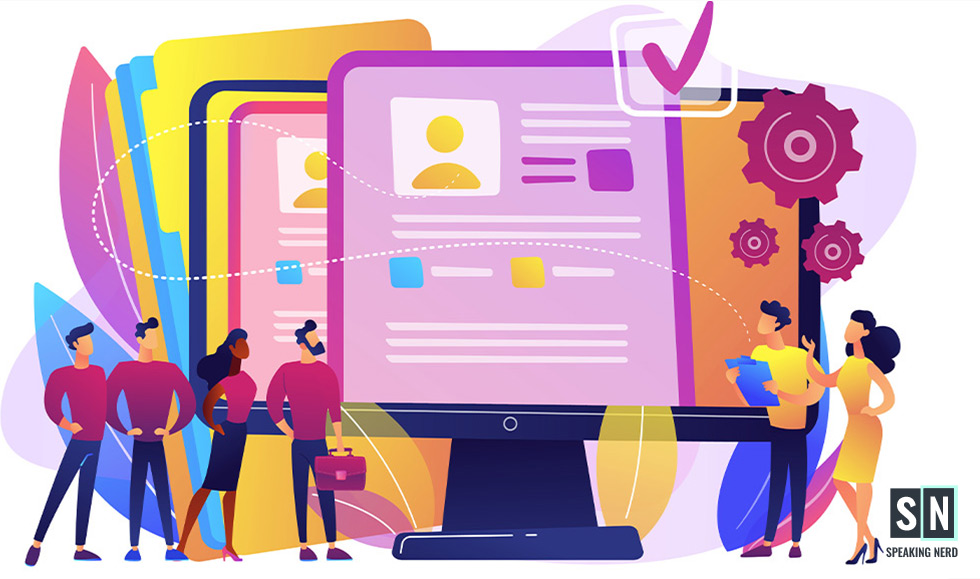Overview
Any business must succeed with its people. Employee performance is both a liability and a strength for a business. You are vital to your company's success as a human resource manager. For businesses of all sizes, effective human resource management (HRM) is crucial. We'll go over the fundamentals of human resource management in this article.
Table of Content
What is Human Resource Management?
Let us start with a succinct definition. The management of people is known as human resource management (HRM), and it is done in order to improve the performance of employees. For instance, you look for people who fit well within the company culture when hiring new employees because they are happier, stay longer, and are more productive than those who are not.
Engagement is another case. Employee engagement increases productivity resulting in a higher quality of work and improving customer satisfaction. In other words, the company benefits when we figure out how to raise employee engagement.
Therefore, human resource management refers to improving business performance through the effective management of employees in the workplace.
The Six HR Fundamentals
Several factors are regarded as the pillars of an effective HR policy when discussing human resource management. We will go over each of these HR fundamentals individually in the section that follows. You can also look at this site for top human resources executive search firms.
1. Recruitment and Selection
The most noticeable aspects of HR are probably recruitment and selection. One of the most crucial duties of the HR department is to recruit applicants and choose the best ones to work for the company. The best employees are essential to the success of the business because people are its most valuable resource.

Whenever a new position is created or a current position becomes vacant, the search for new employees typically starts. The HR department then begins hiring candidates after receiving the job description from the direct supervisor. To find the ideal candidate for the position, HR may use a variety of selection tools during this process. You can also look at this site for top human resources executive search firms. These comprise interviews, various tests, reference checks, and additional hiring practices.
When there are numerous applicants, HR may occasionally use pre-selection tools. When it comes to qualified candidates, these tools aid in sorting through the good candidates from the bad. The chosen candidates then proceed to the next stage, where they are subjected to an interview and a more thorough evaluation.
2. Performance Management
The second HR fundamental principle is performance management. It's about encouraging workers to give their all at work to boost the bottom line of the business. Employees typically have a set number of tasks to complete each day. In order to perform at their best, employees can receive feedback on their performance through a structure called performance management.

The typical performance management cycle used by organizations includes planning, monitoring, reviewing, and rewarding employee performance. Employees can be classified as high performers, low performers, and high and low potential employees based on the outcomes of this process.
The direct supervisor is typically in charge of and HR supports effective performance management, which is a joint effort between HR and management. Effective performance management is essential. Full-functioning employees increase a business's productivity, sustainability, and profit margin. Underperforming employees may not be a good fit for their job or the workplace culture. It might be necessary to fire these employees.
3. Compensation and Benefits
Another fundamental HR issue is compensation and benefits. Fair compensation is essential for inspiring and keeping workers with the company for a long duration of time. Ensuring equity and fairness in terms of compensation is one of the core principles of HR management.

Offering the appropriate compensation is essential in luring the best talent. The budget and profit margins of the business must be balanced with this. HR needs to keep an eye on pay raises and establish performance benchmarks. Occasionally, HR may also need to carry out a salary audit.
Primary and secondary compensation are both included in employee compensation. Primary compensation is cash payment received directly for services rendered; it frequently takes the form of a monthly salary but can also be performance-based.
Any non-monetary rewards are secondary benefits. Additional vacation time in vacation rentals, flexible work hours, child care, retirement benefits, company cars and laptops, and other perks are some examples. The intention is to motivate employees by rewarding them in a positive way.
4. Learning and Development
People are the result of their upbringing in a particular nation or era, as well as a variety of cultural influences. Learning and development in HR make sure that workers adjust to adjustments in technology, processes, and societal or legal changes.

Employee learning and development aid in skill improvement. HR oversees learning and development (L&D), and a sound policy can be very beneficial in helping the business achieve its long-term objectives.
For L&D activities, many businesses have set budgets in advance. Apprentices, potential managers, and other high-potential employees frequently receive more training opportunities than other employees from this budget, which is then distributed among the staff. Employees can join a company with a wide range of knowledge and expertise. Employees have the chance to grow as leaders and fill skill gaps through L&D. HR can collaborate with managers to suggest different development plans based on assessments of employee performance and potential.
5. Succession Planning
Planning for succession involves making backup plans in case important employees leave the company. For instance, if a crucial senior executive leaves, a replacement can be in place to maintain continuity and save the business a lot of money.

Planning for succession is frequently based on L&D and performance reviews. As a result, a talent pipeline is built. This is a list of qualified applicants who are available to fill senior positions. To effectively manage people, this pool must be built and maintained.
6. HR Data and Analytics
Data and analytics are the final tenets of HR fundamentals. The last five years have seen a significant shift in HR's emphasis on data. In essence, the HR information system that was just discussed is a data entry system. Making better, more informed decisions is possible with the help of the data in these systems.

HR KPIs or metrics are a simple way to monitor important data. These precise measurements give insight into how a business is doing in a particular field. Reporting on HR is the term used for this. These reports emphasize the company's present and historical state.
The HR division can make forecasts using the results of HR analytics. HR can make data-driven decisions by actively measuring and examining this data. These choices are frequently more objective, which makes it simpler to win management support for them. You can also look at this site's top human resources executive search firms.
Conclusion
The six pillars of HR management are now familiar to you. These HR fundamentals are all interrelated. They all interact and have an impact on one another. Think of these six principles as building blocks; sound management of one principle strengthens the others. When these HR fundamentals are applied collectively, a workforce is guaranteed to perform better and be capable of performing at its peak.


